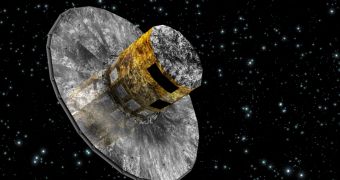Officials with the European Space Agency (ESA) announce that their most expensive spacecraft to date, the Gaia space observatory, has been completed and is ready for its launch date in December.
The spacecraft will be the first to conduct a three-dimensional study of the Milky Way, charting the positions and characteristics of more than 1 billion stars in our galaxy, and beyond. It is estimated that the Milky Way is home to no less than 100 billion stars.
Over the next five years, Gaia will be surveying the entire night sky, conducting at least 70 passes over each star in its field of view. All data will then be included in a dataset that will be used to produce a model of stellar distribution within our galaxy.
The vehicle, manufactured for ESA by EADS Astrium and e2v Technologies, weighs around 2 tons (4,400 pounds), and is scheduled to launch into space aboard a Russian-built Soyuz rocket. Take-off will occur from the Soyuz Launch Complex (ELS) at the Kourou Spaceport, in the French Guiana.
ESA officials say that the complex satellite now aims for a December 19 launch date. If successful, the Soyuz rocket will take Gaia to Earth's L2 Lagrangian point. Each of the five Lagrangian points allow spacecraft to remain in the same relative position with respect to the Sun-Earth-Moon system.
At its point of closest approach to Earth, Gaia's orbit will take the spacecraft within 90,000 kilometers (56,000 miles) of the surface. The farthest the satellite will ever be from Earth is 340,000 kilometers (210,000 miles), mission controllers say.
“Gaia will be a revolution in our knowledge of the local Universe. For the first time we will have a fair sample of what is out there, where it is, how it is moving, how unseen (dark) matter is distributed, where and when stars formed and where and when the chemical elements of which we are made were created,” says Gerry Gilmore.
He is the principal UK investigator for the Gaia mission, and is based at the University of Cambridge, PhysOrg reports.
“Gaia will make a huge step towards understanding how the Milky Way came to be formed, and evolved into what we see today. For the first time, we will be able to see the Milky Way in 3-D. In fact in 6-D – where stars are, and how they are moving,” he concludes.

 14 DAY TRIAL //
14 DAY TRIAL //